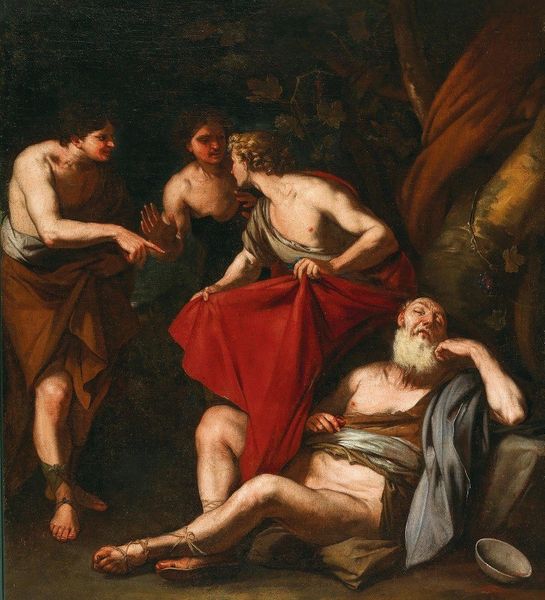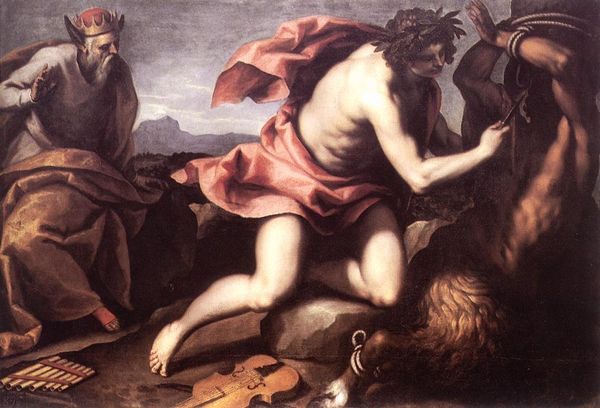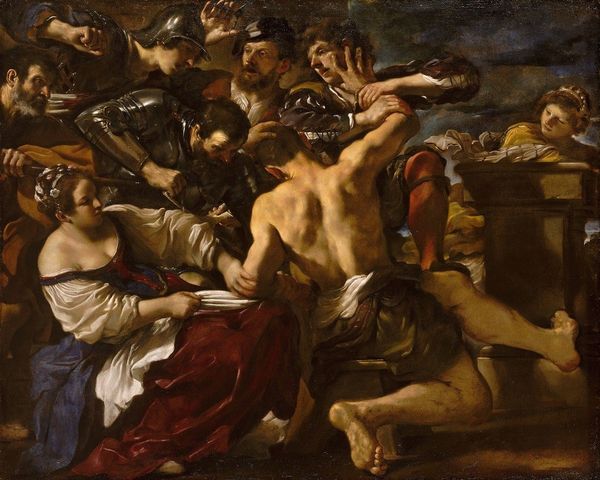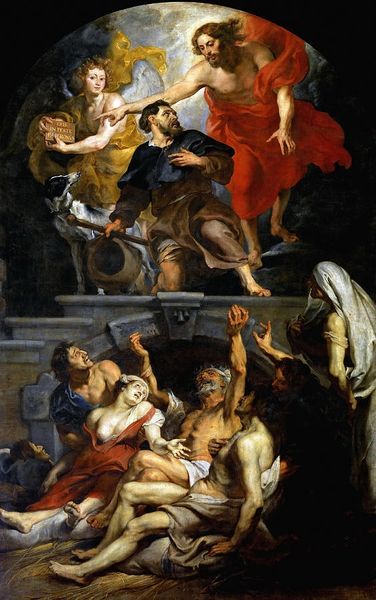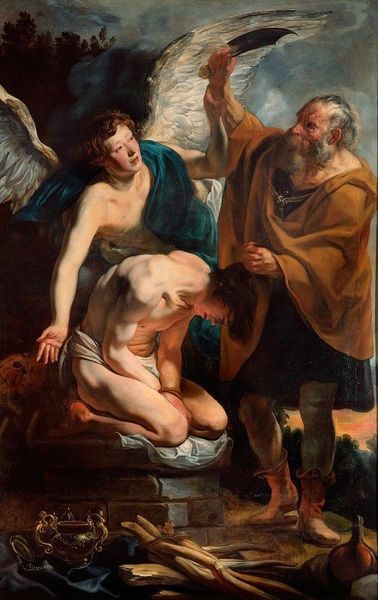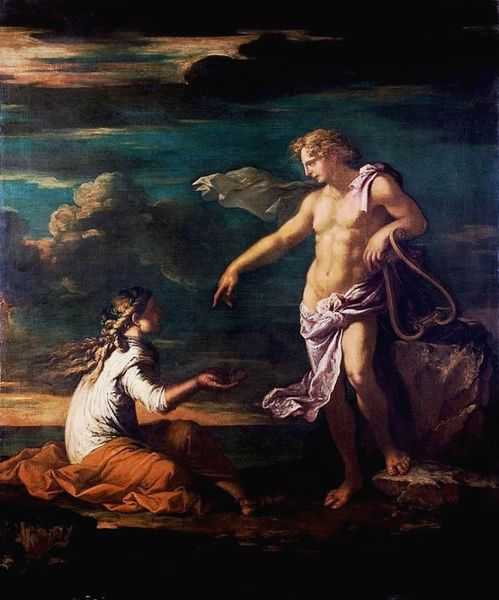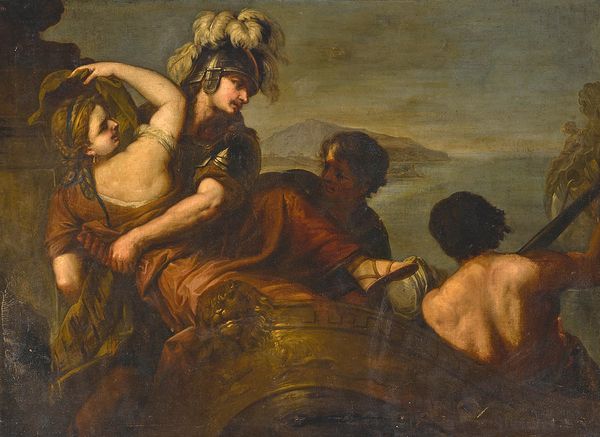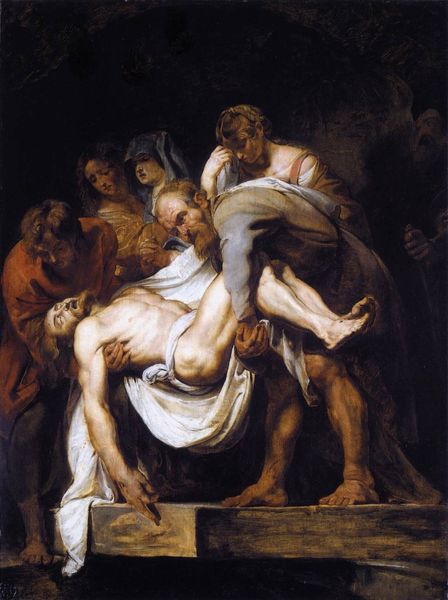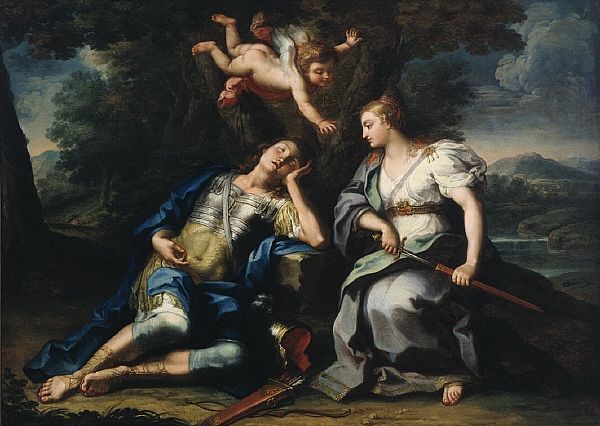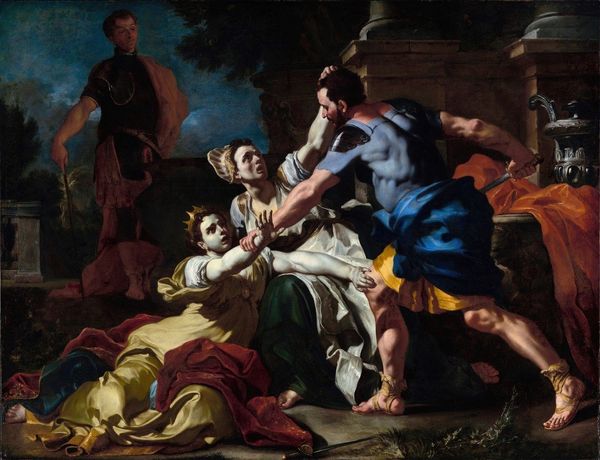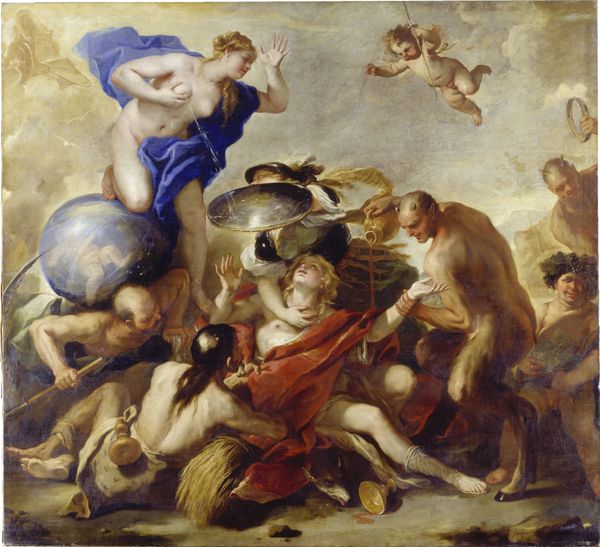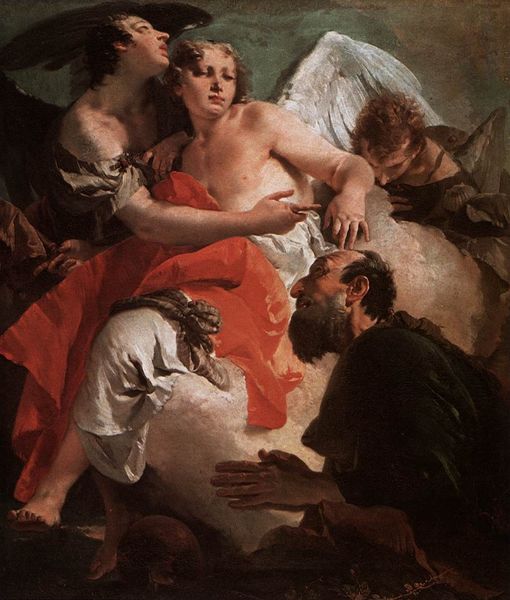
oil-paint
#
allegory
#
baroque
#
oil-paint
#
landscape
#
figuration
#
oil painting
#
mythology
#
history-painting
Copyright: Public domain
Curator: This is Giambattista Pittoni’s "Sacrifice of Isaac," painted around 1720. Looking at it, the drama is palpable, isn't it? Editor: It is! My initial reaction is one of tension. The high contrast of light and shadow, combined with the frenzied gestures of the figures, creates a feeling of impending doom—but also a sudden reprieve. Curator: Indeed. Pittoni was known for his elegant and often theatrical compositions, which certainly comes through here. Let's consider the materials. The use of oil paint allows for the rich layering and luminosity we see, enhancing the emotional impact of the scene. Look at the texture in Abraham's beard or the softness of the angel's wings. This materiality connects directly to the value placed on skillful craftsmanship during the Baroque period. Editor: Absolutely. And situated in the context of early 18th-century Venice, this painting prompts consideration of power dynamics, patriarchy, and religious devotion. Abraham’s willingness to sacrifice his son for God highlights the oppressive societal expectations placed upon both father and child, reinforced through religious dogma. It begs us to consider the ethical dimensions of blind faith. Curator: That’s a strong reading. Another way to look at this is through the lens of the art market. Paintings like these were commodities, purchased by wealthy patrons to display their piety and taste, demonstrating their adherence to social norms, their ability to pay, and their position in the market. Editor: While acknowledging those patronage networks is vital, the painting still raises questions about the acceptability of such severe patriarchal dominance and how that connects to contemporary discussions of religious fundamentalism, and the often invisible structures that are oppressing those with less political leverage. Curator: Fair point. So, viewing "Sacrifice of Isaac," we've touched upon both the historical craft and socio-political readings the work generates. Editor: Exactly, an artwork both of its time, and forever sparking needed debate.
Comments
No comments
Be the first to comment and join the conversation on the ultimate creative platform.

